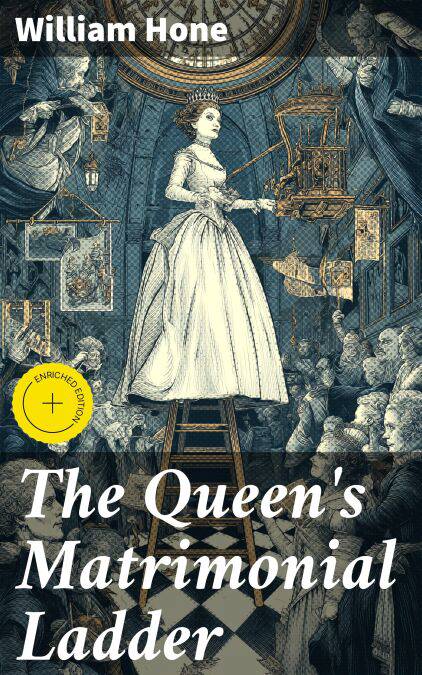
Je cadeautjes zeker op tijd in huis hebben voor de feestdagen? Kom langs in onze winkels en vind het perfecte geschenk!
- Afhalen na 1 uur in een winkel met voorraad
- Gratis thuislevering in België vanaf € 30
- Ruim aanbod met 7 miljoen producten
Je cadeautjes zeker op tijd in huis hebben voor de feestdagen? Kom langs in onze winkels en vind het perfecte geschenk!
- Afhalen na 1 uur in een winkel met voorraad
- Gratis thuislevering in België vanaf € 30
- Ruim aanbod met 7 miljoen producten
Zoeken
The Queen's Matrimonial Ladder E-BOOK
Enriched edition. A National Toy, With Fourteen Step Scenes; and Illustrations in Verse, With Eighteen other Cuts
William Hone
E-book | Engels
€ 1,99
+ 1 punten
Omschrijving
In "The Queen's Matrimonial Ladder," William Hone presents a satirical examination of the social and political intricacies surrounding royal matrimony in 19th-century England. Through a unique blend of humor and pointed critique, Hone employs various literary styles'—including verse, dialogue, and caricature'—to illuminate the absurdities of courtship, marriage, and the expectations placed upon women in high society. The book is set against the backdrop of an era rife with scandal and gossip, deftly capturing the complexities of public perception and personal desire involving the monarchy. William Hone, a prominent writer and pamphleteer of his time, was known for his sharp wit and keen observations of English life. His background in journalism and political activism greatly influenced his satirical approach, allowing him to comment not only on the royal family but also on broader societal issues, such as class disparity and gender relations. Hone's experiences during a time of great social change provided him with a rich tapestry of material to explore the intersection of personal lives and public affairs, making his works deeply resonant. This book is an essential read for anyone interested in the interplay of satire and society. Hone's incisive commentary invites readers to reflect on the nature of marriage and the paradoxes of power'—a timely exploration that remains relevant today. Its blend of humor and serious inquiry offers both entertainment and insight, making it a captivating addition to any literary collection.
In this enriched edition, we have carefully created added value for your reading experience:
- A succinct Introduction situates the work's timeless appeal and themes.
- The Synopsis outlines the central plot, highlighting key developments without spoiling critical twists.
- A detailed Historical Context immerses you in the era's events and influences that shaped the writing.
- A thorough Analysis dissects symbols, motifs, and character arcs to unearth underlying meanings.
- Reflection questions prompt you to engage personally with the work's messages, connecting them to modern life.
- Hand‐picked Memorable Quotes shine a spotlight on moments of literary brilliance.
- Interactive footnotes clarify unusual references, historical allusions, and archaic phrases for an effortless, more informed read.
In this enriched edition, we have carefully created added value for your reading experience:
- A succinct Introduction situates the work's timeless appeal and themes.
- The Synopsis outlines the central plot, highlighting key developments without spoiling critical twists.
- A detailed Historical Context immerses you in the era's events and influences that shaped the writing.
- A thorough Analysis dissects symbols, motifs, and character arcs to unearth underlying meanings.
- Reflection questions prompt you to engage personally with the work's messages, connecting them to modern life.
- Hand‐picked Memorable Quotes shine a spotlight on moments of literary brilliance.
- Interactive footnotes clarify unusual references, historical allusions, and archaic phrases for an effortless, more informed read.
Specificaties
Betrokkenen
- Auteur(s):
- Uitgeverij:
Inhoud
- Aantal bladzijden:
- 1334
- Taal:
- Engels
Eigenschappen
- Productcode (EAN):
- 4057664627407
- Verschijningsdatum:
- 25/11/2019
- Uitvoering:
- E-book
- Beveiligd met:
- Digital watermarking
- Formaat:
- ePub

Alleen bij Standaard Boekhandel
+ 1 punten op je klantenkaart van Standaard Boekhandel
Beoordelingen
We publiceren alleen reviews die voldoen aan de voorwaarden voor reviews. Bekijk onze voorwaarden voor reviews.









